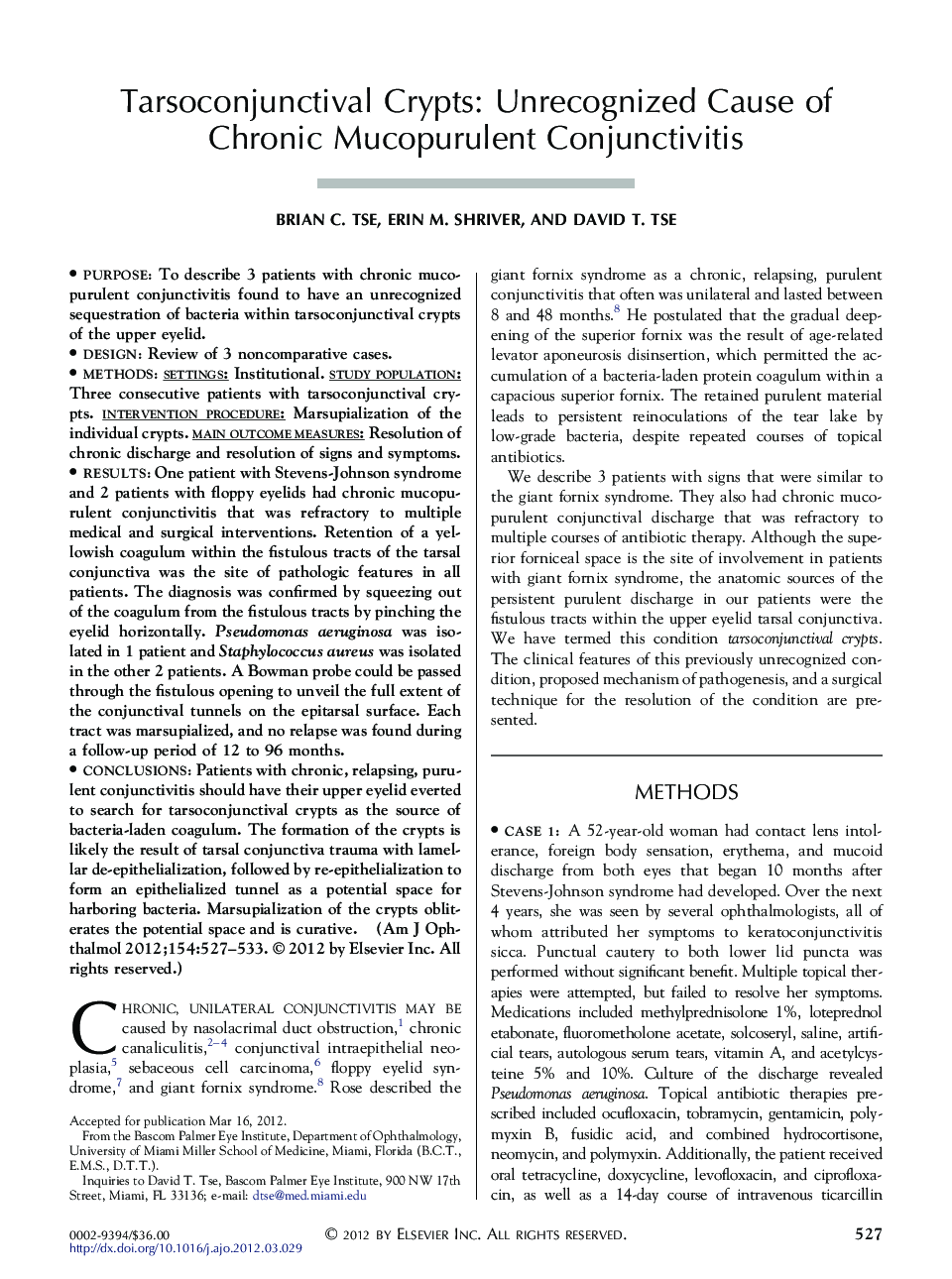| Article ID | Journal | Published Year | Pages | File Type |
|---|---|---|---|---|
| 6196057 | American Journal of Ophthalmology | 2012 | 7 Pages |
PurposeTo describe 3 patients with chronic mucopurulent conjunctivitis found to have an unrecognized sequestration of bacteria within tarsoconjunctival crypts of the upper eyelid.DesignReview of 3 noncomparative cases.Methodssettings: Institutional. study population: Three consecutive patients with tarsoconjunctival crypts. intervention procedure: Marsupialization of the individual crypts. main outcome measures: Resolution of chronic discharge and resolution of signs and symptoms.ResultsOne patient with Stevens-Johnson syndrome and 2 patients with floppy eyelids had chronic mucopurulent conjunctivitis that was refractory to multiple medical and surgical interventions. Retention of a yellowish coagulum within the fistulous tracts of the tarsal conjunctiva was the site of pathologic features in all patients. The diagnosis was confirmed by squeezing out of the coagulum from the fistulous tracts by pinching the eyelid horizontally. Pseudomonas aeruginosa was isolated in 1 patient and Staphylococcus aureus was isolated in the other 2 patients. A Bowman probe could be passed through the fistulous opening to unveil the full extent of the conjunctival tunnels on the epitarsal surface. Each tract was marsupialized, and no relapse was found during a follow-up period of 12 to 96 months.ConclusionsPatients with chronic, relapsing, purulent conjunctivitis should have their upper eyelid everted to search for tarsoconjunctival crypts as the source of bacteria-laden coagulum. The formation of the crypts is likely the result of tarsal conjunctiva trauma with lamellar de-epithelialization, followed by re-epithelialization to form an epithelialized tunnel as a potential space for harboring bacteria. Marsupialization of the crypts obliterates the potential space and is curative.
